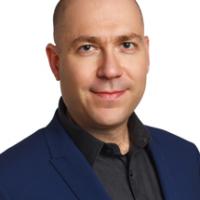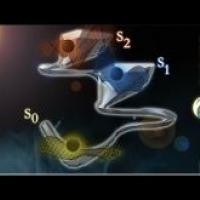Q-Chem Webinar 5
The Harvard Clean Energy Project

Alán Aspuru-Guzik is a professor of Chemistry and Computer Science at the University of Toronto and is also the Canada 150 Research Chair in Theoretical Chemistry and a Canada CIFAR AI Chair at the Vector Institute. He is a CIFAR Lebovic Fellow in the Biologically Inspired Solar Energy program. Alán also holds an Google Industrial Research Chair in Quantum Computing.
Alán began his independent career at Harvard University in 2006 and was a Full Professor at Harvard University from 2013-2018. He received his B.Sc. from the National Autonomous University of Mexico (UNAM) in 1999 and obtained a PhD from the University of California, Berkeley in 2004, where he was also a postdoctoral fellow from 2005-2006.
Alán conducts research in the interfaces of quantum information, chemistry, machine learning and chemistry. He was a pioneer in the development of algorithms and experimental implementations of quantum computers and quantum simulators dedicated to chemical systems. He has studied the role of quantum coherence in the transfer of excitonic energy in photosynthetic complexes and has accelerated the discovery by calculating organic semiconductors, organic photovoltaic energy, organic batteries and organic light-emitting diodes. He has worked on molecular representations and generative models for the automatic learning of molecular properties. Currently, Alán is interested in automation and "autonomous" chemical laboratories.
Among other recognitions, he received the Google Focused Award for Quantum Computing, the Sloan Research Fellowship, The Camille and Henry Dreyfus Teacher-Scholar award, and was selected as one of the best innovators under the age of 35 by the MIT Technology Review. He is a member of the American Physical Society and an elected member of the American Association for the Advancement of Science (AAAS) and received the Early Career Award in Theoretical Chemistry from the American Chemical Society.
Abstract
The Harvard Clean Energy Project (CEP) is a theory-driven search for the next generation of organic solar cell materials. CEP has established an automated, high-throughput, in silico framework to study potential candidate structures for organic photovoltaics. At this phase, we are concerned with the characterization of millions of molecular motifs using first-principles quantum chemistry (as implemented in the Q-Chem software package). The scale of this study requires a correspondingly large computational resource, which is provided by distributed volunteer computing on IBM's World Community Grid. The results are compiled and analyzed in an extensive reference database and will be made available for public use. In addition to finding specific candidates with certain properties, it is the goal of CEP to illuminate and understand the structure property relations in the domain of organic electronics. Such insights can open the door to a rational and systematic design of future high-performance materials. The computational work in CEP is tightly embedded in a collaboration with experimentalists, who provide valuable input and feedback to the project.



